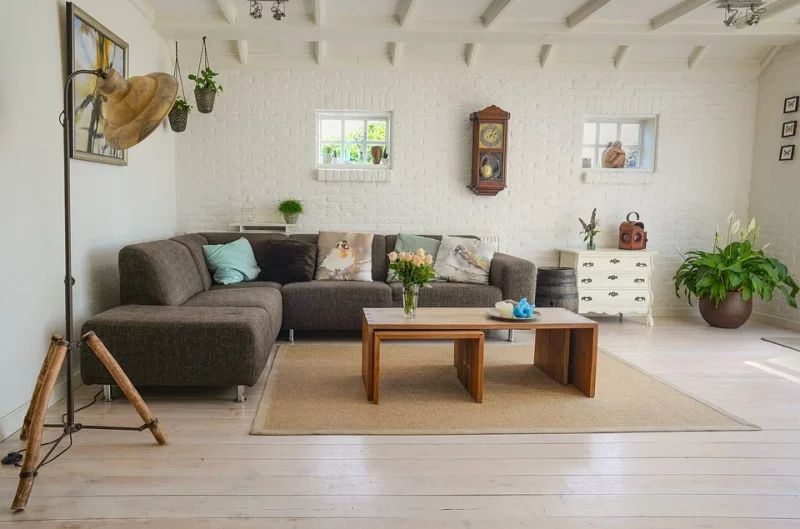So the question here is how to paint a baseboard heater? In today’s post, we’ll explore the proper way to paint baseboard heaters, offer valuable tips and techniques, and offer you step-by-step directions as to how to get your baseboard heaters to appear like new. So you don’t have to worry if you don’t know the proper way. But before painting the baseboard heater the question comes to mind: what you should know before painting the baseboard heater?
If the baseboards have to be updated, painting is a simple method. There’s no need to spend a lot of money replacing them if a simple do-it-yourself paint job can refresh them. Coloring baseboard heaters will assist in concealing any flaws and refresh the look of your house.
Paint them in a one-of-a-kind design that makes them pop out or fit your environment. Another alternative is to paint frames in neutral shades to help them fit in. Metal paint will help preserve the baseboard heaters in good working order for several years to come.
Steps To Paint The Baseboard Heater
Let’s now learn a few steps on how to paint a baseboard heater without wasting further time. Follow these simple steps to paint your baseboard heaters correctly. Make sure that you read them carefully before starting, and always remember to be safety conscious.
Step #1. Disconnect the power source and dismantle the cover from the heater
Pull off the end caps and secure the cover to the heater element. If you disassemble the surface, you can begin painting it horizontally. Clear away any metal border parts or bodies from the radiator’s ends. These components usually slip straight off, or if they’re genuinely jammed or painted in position, they can be pushed out with a flat head screwdriver, although they’re usually kept in place by one or two screws.
Step #2. Pull the cover out
To remove the cover from the heater element, take it outside and work on a flat surface or table. The front panel is usually kept with two brackets, one from the top and one at the base. Pull the cover off from the hooks by lifting up and out.
Step #3. Prepare the surface
Use steel wool and sandpaper to remove any rust or debris. The surface should be completely smooth after a good sanding. Properly clean the parts (the section is still connected to the wall). Begin by washing each radiator cap with a soft brush, taking special care to clean caked-on grime and level off any rusty areas. If you think that your radiator covers were coated with high lead levels, take all essential care before employing any of the rough cleaning procedures listed below.
Step #4. Clean the surrounding place with a bowl of water and a piece of cloth
Before proceeding, the ground must be leveled and cleaned. Painter’s tape should be applied all around the region you will be repainting. Now, using fine-grit sandpaper or a polishing sponge, softly sand the externally exposing corners of the radiator cover. Wipe off all of the radiator covers using a brush and a pail of water, and some dish soap. Once everything has dried, wash away any detergent residue with a cloth and a jug of fresh water.
Step #5. Using painter’s tape, cover the wall and baseboard all around the heating element
Clean metal primers should be applied to the exterior facing surfaces of each item. Because this is an oil-based primer, I prefer to apply it using a disposable foam brush for quick cleanup. Remember to prime the top section of the radiator cover that is fastened to the wall.
Step #6. Cover the area evenly with metal filler
Take care not to provide more than two coats. Allow each application to dry before continuing to the next. Choose one color and paint a little coat of it on. Apply two coats, allowing each to dry before adding the next.
Step #7. Wipe up the paint as needed after it has dried
Apply two thin layers of paint to every radiator cap piece, allowing the necessary drying time between applications. Fresh paint damages readily, so let your newly painted radiator shields dry for a few days before reattaching the radiators. You may also want to read about the hydronic baseboard heater buying guide.
It’s A Wrap!
As you must have learned how to paint a baseboard heater. Now you can do it yourself easily. You should keep in mind that nothing prevents you from changing the look of your unsightly, rusted baseboard heaters if you’re tired of looking at them. You should have all the information you need to paint baseboard heaters after reading this article. See?
It’s considerably easier than you think to conceal rust and other flaws. Can you use regular paint on baseboard heaters? It’s one of the crucial questions. When it comes to painting, a primer is your greatest friend. It will allow you to cover any painting mistakes, even if you’re not the best at it.
Oil-based paint is recommended by experts, although latex paint may also be utilized and is much easier to remove than its rival. It is critical to take security precautions. While scraping and painting, you should wear a face mask. You may want to read related articles; know how to wire electric baseboard heaters and how to install an electric baseboard heater.

